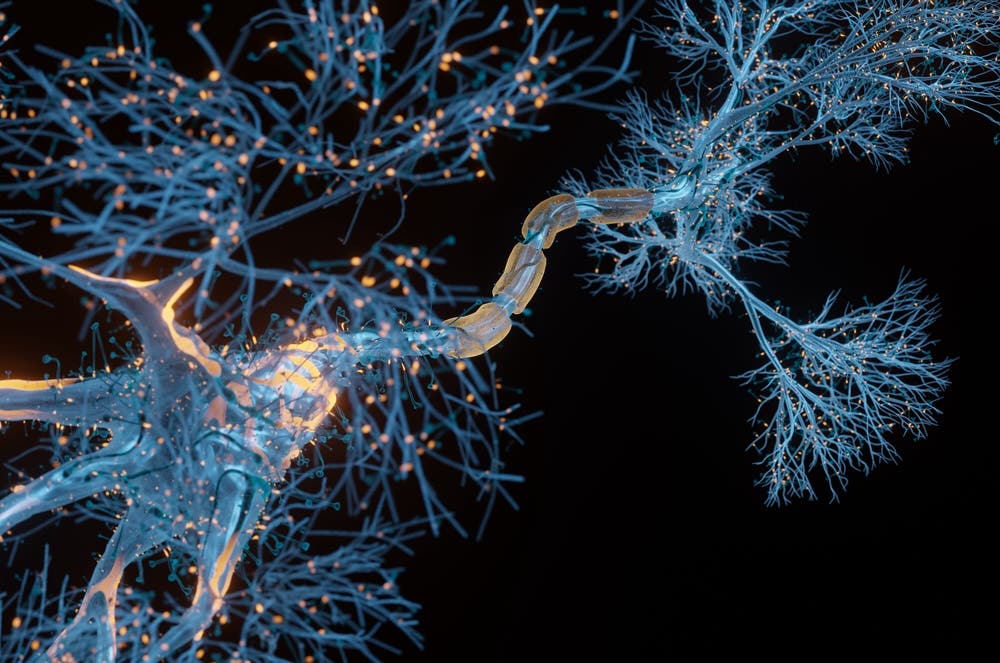Breakthrough innovation sheds light on memory and learning
Researchers have long sought insight into the intricate processes of dendritic translation—a fundamental mechanism crucial for memory functi

Activity taking place within the dendrites that branch off of neuron cell bodies is key to memory formation. (CREDIT: Creative Commons)
In the quest to understand memory formation, researchers have long sought insight into the intricate processes of dendritic translation—a fundamental mechanism crucial for memory function.
This mechanism involves localized protein production within dendrites, the branching structures of neurons. Dysfunction in dendritic translation is implicated in various intellectual disorders, underscoring its significance in cognitive processes.
Robert B. Darnell, a scientist at Rockefeller University, emphasizes the importance of unraveling dendritic translation, calling it the "holy grail for understanding memory formation." Recently, Darnell's team introduced a breakthrough study in Nature Neuroscience, unveiling a novel platform capable of identifying the regulatory mechanisms driving dendritic translation.
TurboID is a robust methodology to isolate the molecular composition of the postsynaptic compartment in primary cortical neurons. (CREDIT: Nature Neuroscience)
This platform, named TurboID, enabled the discovery of previously unknown factors influencing memory formation, shedding light on the mechanisms underlying protein synthesis in dendrites and its role in learning and memory. Moreover, these findings hold potential implications for conditions like Fragile X syndrome, a common intellectual disability.
Lead author Ezgi Hacisuleyman, formerly a postdoctoral researcher in Darnell's lab and now an assistant professor at The UF Scripps Institute, highlights the significance of their work in overcoming technological limitations to comprehensively investigate synaptic activity involved in memory formation.
Their innovative techniques offer high-resolution insights into neuronal processes, closely mirroring those in the brain.
Related Stories
Darnell praises Hacisuleyman's work, noting that it defines a new biochemical pathway that significantly expands current understanding of memory and learning. He emphasizes the transformative impact of this research, envisioning numerous avenues for further exploration into the molecular mechanisms of memory formation.
Memory formation primarily centers around the hippocampus, a region crucial for learning and memory consolidation.
Darnell, drawing from his experience as a physician-scientist, underscores the pivotal role of dendritic translation in memory function. He recalls encounters with patients whose impaired hippocampi resulted in profound memory deficits, emphasizing the unique RNA metabolism regulation observed in hippocampal neurons.
Model for activity-dependent eIF4G2:uORF-mediated translational control in dendrites. (CREDIT: Nature Neuroscience)
Overcoming previous limitations, Hacisuleyman's extension of the TurboID platform facilitated a comprehensive examination of dendritic activity during memory formation. By integrating RNA-sequencing, CLIP, translation, and protein analysis, the team captured critical moments in dendritic protein synthesis, unveiling a microscopic upheaval upon neuronal activation.
This upheaval involves the rapid recruitment of ribosomes to mRNA, a process indicative of memory formation. Notably, this process leads to the production of not only new proteins but also micropeptides—small proteins whose functions remain largely unknown.
TurboID is a robust methodology to isolate the molecular composition of the postsynaptic compartment in primary cortical neurons. Distribution of streptavidin signal (cyan) in Pan-TurboID-transduced or TurboID-PSD95-transduced activated neurons. DAPI (blue) marker for nuclei. Magnification, ×20. (CREDIT: Nature Neuroscience)
The identification of an RNA-binding protein crucial for ribosome-mRNA interaction provides valuable insights into the mechanisms underlying micropeptide synthesis. Disabling this protein impedes micropeptide formation, highlighting its significance in dendritic translation and memory function.
Darnell underscores the significance of this discovery, noting the emergence of a new field of study centered on micropeptides and their potential roles in memory formation. He emphasizes the vast implications of this finding, envisioning numerous avenues for future research into the functions of these micropeptides.
Of particular interest is the role of the protein FMRP, implicated in Fragile X syndrome. The team's observations align with the molecular biology of FMRP, offering new insights into the pathophysiology of Fragile X and suggesting potential therapeutic targets.
Beyond its immediate implications, the dendritic-TurboID platform holds promise for investigating RNA regulation and protein synthesis in other brain regions and diseases. Hacisuleyman highlights the platform's potential for detailed examination across various neurological conditions, paving the way for deeper understanding and therapeutic interventions.
By unveiling novel regulatory mechanisms and identifying potential therapeutic targets, this study represents a significant step forward in the quest to understand and address cognitive disorders.
For more science news stories check out our New Innovations section at The Brighter Side of News.
Note: Materials provided above by the The Brighter Side of News. Content may be edited for style and length.
Like these kind of feel good stories? Get the Brighter Side of News' newsletter.



